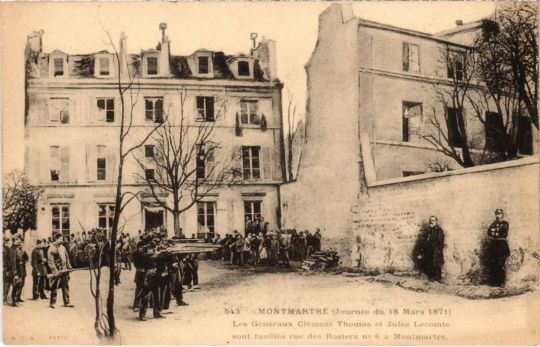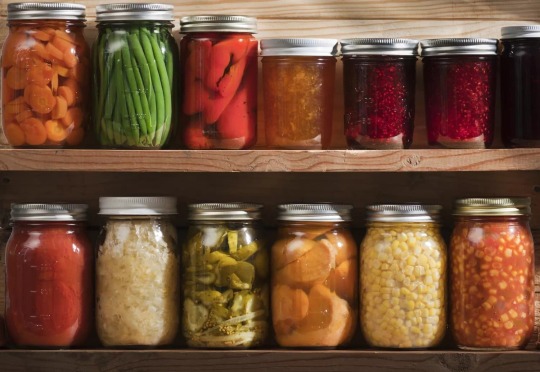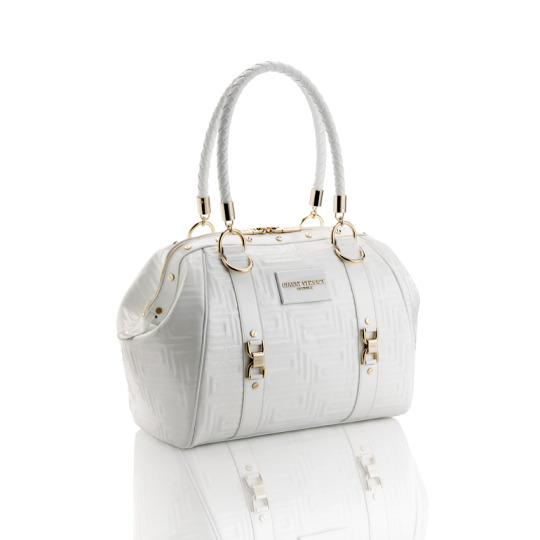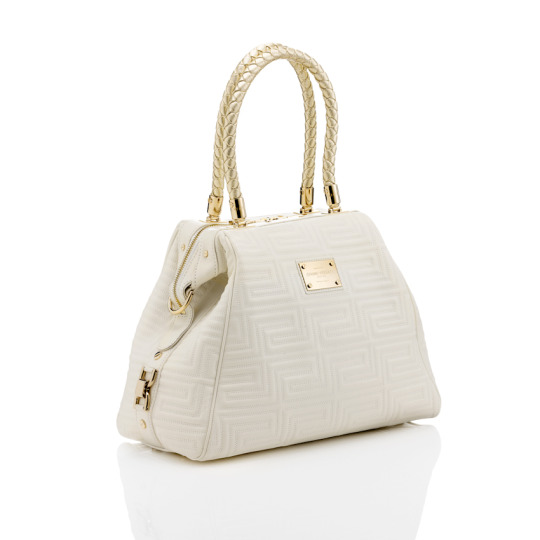#thomas appert
Explore tagged Tumblr posts
Text
This postcard is part of the propagandist photomontage album entitled "Les Crimes de la Commune", by Ernest-Charles Appert.
These "ersatz of historical painting" (x) attempted to portray the communards as deranged blood hungry lunatics, siding wholeheartedly with the politics of the Thiers regime.
The album proved to be short-lived, being taken off print in late 1872.
This image is titled "Assassinat des généraux Clément-Thomas et Claude Lecomte", a photomontage housed at Carnavalet Museum in Paris.

Execution in the Montmartre neighbourhood during the 1871 Paris Commune
French vintage postcard
17 notes
·
View notes
Text
Tóm tắt lịch sử thực phẩm đóng hộp

Hiện nay, khi bạn đến một cửa hàng tạp hóa hay chuỗi cửa hàng lớn, bạn sẽ luôn thấy thực phẩm đóng hộp, tuy nhiên phương pháp này mới chỉ xuất hiện gần đây, trong khi con người đã tìm ra những cách đầu tiên để bảo quản thực phẩm từ rất lâu về trước. Con người đã áp dụng phương pháp làm khô, ướp muối và lên men thực phẩm từ rất lâu, trước khi có những con người bắt đầu ghi chép lại lịch sử. Nhưng việc bảo quản thực phẩm bằng cách xử lý nhiệt và sau đó niêm phong trong hộp kín chỉ xuất hiện mới từ cuối thế kỷ 18.
Lịch sử của quá trình đóng hộp
Năm 1795, Napoléon Bonaparte treo thưởng cho ai phát minh ra được phương pháp bảo quản thực phẩm an toàn, đáng tin cậy cho đội quân của ông vì đội quân này phải di chuyển liên tục. Nicholas Appert đã nhận thử thách này và khoảng 15 năm sau, ông đã giới thiệu một phương pháp mới, đó là chế biến thực phẩm bằng nhiệt trong các lọ thủy tinh được gia cố bằng dây và niêm phong bằng sáp. Bước cuối cùng trong phương pháp này tương tự như phương pháp mà một số người vẫn sử dụng để niêm phong lọ thạch bằng sáp parafin, tuy nhiên theo FYI, đây không phải là một kĩ thuật an toàn.

Phương pháp đóng hộp đầu tiên
Bước đột phá tiếp theo trong lịch sử của bảo quản thức ăn là phương pháp "đóng hộp" thực sự đầu tiên (không giống với việc "đóng chai"). Đến năm 1810, Peter Durand, người Anh, đã giới thiệu một phương pháp mới là niêm phong thực phẩm trong hộp thiếc "không thể phá vỡ". Cơ sở đóng hộp thương mại đầu tiên ở Hoa Kỳ được thành lập vào năm 1912 b��i Thomas Kensett. Mãi cho đến gần một thế kỷ sau khi Nicholas Appert nhận thử thách để tìm ra cách bảo quản thực phẩm của Napoléon, Louis Pasteur mới có thể chứng minh được rằng sự phát triển của vi sinh vật khiến cho thực phẩm bị hư hỏng. Trước đó, mọi người đều biết rằng phương pháp đóng hộp có mang lại hiệu quả, nhưng không biết tại sao lại như vậy. Bên cạnh những phát minh này, vào thời Nội chiến Hoa Kỳ, các lọ bảo quản thực phẩm làm bằng thủy tinh có kẹp kim loại và vòng cao su (có thể thay thế) đã ra đời. Những chiếc lọ này vẫn còn cho đến ngày nay, mặc dù hiện nay chúng thường được sử dụng để đựng đồ khô nhiều hơn là đóng hộp để bảo quản thực phẩm. Năm 1858, John Mason đã phát minh ra một hộp đựng bằng thủy tinh, bên trên có phần ren vít và một cái nắp có gioăng cao su. Những chiếc lọ có dây như lọ Lightning và Atlas đã được sử dụng từ cuối thế kỷ 19 cho đến năm 1964, và hiện nay vẫn xuất hiện trong các cửa hàng nhỏ. Đọc tiếp: Khoai tây chiên và món ăn truyền thống của người Anh
Những người tiên phong trong ngành
Vào cuối những năm 1800, William Charles Ball đã cùng các anh trai kinh doanh lọ bảo quản thực phẩm và sau đó mua lại các công ty nhỏ hơn. Họ nhanh chóng trở thành những người dẫn đầu trong ngành. Alexander Kerr đã phát minh ra lọ có miệng rộng để người dùng có thể dễ dàng cho thức ăn vào hơn vào năm 1903 (Ý tưởng này lập tức được anh em nhà Ball tiếp thu và phổ biến rộng rãi). Sau đó, vào năm 1915, Kerr đã cải tiến một phát minh mà một người tên là Julius Landsberger đã phát minh ra, đó là một chiếc nắp kim loại có một miếng đệm gắn cố định. Kerr đã phát minh ra một đĩa kim loại có miếng đệm tương tự, được giữ cố định bằng một vòng kim loại có ren. Từ đó chiếc hộp 2 nắp hiện đại ra đời. Công nghệ đồ hộp tiếp tục phát triển. Các thương hiệu như Quattro Stagioni bắt đầu sử dụng nắp hộp một mảnh nhưng có cách hoạt động tương tự như thiết kế nắp hộp 2 mảnh cũ. Read the full article
0 notes
Photo

Magnifique victoire de Benoit Girondel :-) au Grand Raid 2017 @ladiagonaledesfous de la Réunion Le meilleur lors de la montée du Maïdo :-) Merci Benoit pour ce shoot magnifique au 50%du Maïdo all copyright reserved to thomas Appert #thomasappert @thomasappert #benoitgirondel #teamasics #UTWT #1790 #victoire #becomeafinisher #ladiagonaledesfous #grandraid #grandraidreunion #maïdo #ultratrail #ultratrailrunning #france #endurance #reunion #reunionisland #reuniontourisme #grandraid #raid #hero #photography #photographer #landscape #sport #mentalhealth #winner #trailer #iledelareunion (à Maïdo)
#raid#landscape#mentalhealth#photography#france#utwt#benoitgirondel#maïdo#victoire#teamasics#thomasappert#grandraidreunion#iledelareunion#reunion#ultratrail#grandraid#hero#reuniontourisme#ultratrailrunning#winner#sport#1790#reunionisland#endurance#photographer#ladiagonaledesfous#trailer#becomeafinisher
0 notes
Photo

#salorges #roadtrip #tramway #nantes The Salorges, built under the old regime, were used in the 17th century by the French West Indies Company, which organized sales there, and are mentioned on a plan drawn up in 1711. The Salorges, once the salt tax abolished during the Revolution, were sold as national property. Pierre-Frédéric Dobrée acquired it on 22 Germinal Year V (11 April 1797). He rented them to the Chamber of Commerce, which bought the premises from his grandson Thomas Dobrée in 1860. They are then used as a deposit for customs. In 1824, Pierre-Joseph Colin (1785-1848) founded, at number 9 of the street, the first Nantes canning factory by canning using tin cans, a technique created in #england , applied by other Nantes companies, and observed by his father Joseph Colin (1746-1815), who chose there to be an improvement in the technique developed by Nicolas Appert. The Amieux Frères cannery bought the Colin factory in 1923 to turn it into a cannery and marine museum. Opened in 1928, the “Musée des Salorges” was donated to the city in 1934. (à Gare Maritime) https://www.instagram.com/p/CQOxgvPAPoP/?utm_medium=tumblr
0 notes
Text
MANDAN, N.D. | Heitkamp says it's not all about resisting Trump
New Post has been published on https://is.gd/4ghCxm
MANDAN, N.D. | Heitkamp says it's not all about resisting Trump
MANDAN, N.D. — Heidi Heitkamp has no time for resisting.
That’s what the North Dakota Democrat in one of the most Donald Trump-friendly states says, though it would seem she also doesn’t have that luxury of avoiding the resistance.
The first-term U.S. senator, among the most vulnerable in her party seeking re-election this year, is maneuvering herself at once as an ally of the Republican president on policy, and a polite opponent at other times.
“If you simply focus on resistance, if that’s your sole motivation and purpose, I don’t know how you’d ever get anything done,” Heitkamp said during an Associated Press interview at a coffee shop in Mandan, her hometown. “When we agree, we work together.”
Heitkamp’s record of championing some of Trump’s proudest deregulation moves has frustrated Republicans, who would like nothing more than to paint her as obstructing the president. That has been the more combative approach of Sen. Elizabeth Warren, seeking re-election in Democrat-friendly Massachussetts.
Heitkamp’s Republican opponent in North Dakota, U.S. Rep. Kevin Cramer, is competing with the incumbent to stand out as the better friend to Trump.
It’s a tack that Heitkamp says overstates Trump’s popularity.
Heitkamp is among 10 Democratic senators seeking re-election this year in states Trump carried in 2016. Their fate will go a long way to deciding whether Democrats stand a chance at capturing the majority in November. Republicans now hold a 51-49 edge.
On the surface, Heitkamp’s challenge may appear greater than those faced by her peers: In 2016, Trump won North Dakota by 36 percentage points, a margin exceeded only in West Virginia.
But Heitkamp, 62, is a near-40-year political veteran of this deeply conservative state. She comes to this moment with a background of statewide political success, heartbreaking defeat and deep insight about the issues of agriculture, energy and trade which drive this lightly populated but pivotal state.
“I’ve won elections by big margins, by little margins. And I’ve lost elections,” said Heitkamp, a former state attorney general and failed candidate for governor who won her Senate seat by 3,000 votes in 2012. “And that’s not what motivates me to do this work — winning and losing elections. It’s the work.”
Heitkamp has championed Trump’s move to loosen federal rules that she has called onerous for North Dakota’s farmers and mining industry. Last month, she stood gleefully alongside Trump as he signed a measure easing regulations on community banks and credit unions, on which many farmers and rural businesses rely.
Heitkamp also has voted to confirm 21 of Trump’s 26 Cabinet-level nominations. Only West Virginia Sen. Joe Manchin, another Democrat facing re-election in a conservative state, has voted for more. Heitkamp has voted for the vast majority of Trump’s judicial nominees, including Supreme Court Justice Neil Gorsuch.
Cramer, whose main campaign claim is his devotion to the president, has criticized Heitkamp for voting in December against Trump’s tax cuts, his chief domestic achievement.
Heitkamp also voted against move forward on a bill that would make nearly all abortions illegal after 20 weeks of pregnancy, and that’s a sore spot with North Dakota’s active evangelical conservatives.
She did lead a bipartisan effort to lift the 40-year ban on U.S. oil exports in 2015, against the wishes of Democratic President Barack. But she faced a backlash from the petroleum industry this year for voting to keep in place limits on burning excess natural gas released from oil drilling sites. Heitkamp, a former natural gas company director, argued that the excess could be captured and sold.
Cramer said Heitkamp is in a bind.
“She has a big dilemma,” he told the AP. “On one hand, she wants to portray herself in North Dakota as a Trump supporter. On the other hand, she wants to be a Democrat and not torque off her big-money, liberal friends. People aren’t falling for it.”
But Heitkamp is a known entity in North Dakota, recognizable to many with her unruly red hair, barn coat and booming laugh.
She visited a grain cooperative and ethanol processing plant in the high, green plains west of Bismarck during the Senate’s Memorial Day recess. Republican Mike Appert, a farmer who met Heitkamp for the first time last week at Red Trail Energy, said she gets high marks from conservatives for her support of the ethanol industry.
Appert, disappointed by her tax-cut and abortion bill opposition, said he appreciates her willingness to work with Trump.
“From a lot of people I’ve talked to, people who voted for Trump for president are going to vote for Heidi,” said Appert, who is undecided in the Senate race, but said Heitkamp “deserves a close look.”
Heitkamp’s up-front spot at Trump’s banking bill signing recalled the time when she joined him on stage for a rally in North Dakota last fall, a symbol of their uncommon bond.
She flew aboard Air Force One from Washington to Bismarck for a September rally. That was nine months after Trump invited her during the presidential transition to Trump Tower, where she rejected his offer of a Cabinet-level position.
Cramer, who initially turned down challenging Heitkamp early this year, changed his mind after a multiple attempts by Trump, including a White House dinner with Cramer and his wife, to recruit him. “He begged me,” Cramer told the AP last week.
Cramer has used the sales job to portray himself as close to the president in a state where Trump’s approval runs well ahead of his national rating.
“She can’t use my support for the Trump agenda against me,” he said. “She’s essentially saying ‘vote for me because I’m going to be like Kevin.’ I’m telling voters to vote for me because I am Kevin.”
But Heitkamp said no one agrees with Trump all of the time, even in North Dakota.
“Do I want to have a relationship so I can pick up the phone and talk about things like farm policy, trade policy? Yeah. I think that’s in the best interest of North Dakota,” she said. “I say if you want someone who is going to vote with the president 100 percent of the time, that’s not going to be me. Because I don’t think he’s 100 percent right.”
__
By THOMAS BEAUMONT,By Associated Press
___
0 notes
Text
A History of Restaurant Tech (Infographic)
The things that changed the way we cooked and dined throughout history…
1782 – Although the fact is contested, it is said that the first restaurant recorded in modern history was founded in Beauvilliers. By creating a menu, including tables and chairs and allowing patrons to order from a list of options, the first modern restaurant set itself apart from public eateries that only served one dish as a quick stop for travelers passing through.
1795 – The first set of tools were created to design the first closed top cooking range by Benjamin Thompson. This tool made adjustable heating possible, which made it possible for cooks to cook their dishes more precisely and to create food for more people.
1810 – Originally designed to feed soldiers in battle, the canning process was invented by Nicolas Appert, a chef in Paris. This meant that ingredients could be more easily preserved and transported, giving cooks a wider range of ingredients to work with to develop more complex dishes.
1834 – Gas began to be used from cooking, replacing coal. This introduction into restaurants made cooking less laborious, cleaner and more consistent.
1844 – The first successful refrigeration machine in the United States was developed in 1844 by John Gorrie. His device did not use a volatile liquid but operated by the principle that air gets hot when compressed and cools when it expands. The air refrigerating principle was extensively used during the latter part of the 19th century and during the early years of the 20th century.
1879– The cash register was invented by James Ritty allowing restaurant to track each transaction. Later, when the National Cash Register company was founded, the cash register was able to print paper receipts, which documented each transaction.
1914 – Electric range was invented by Thomas Ahearn.
1973 – The first computerized point of sales system was created by IBM and not long after, William Brobeck and Associates created the first POS system for restaurants in 1974. McDonalds was the first restaurant to use a POS system, which allowed them to place an order at the register and print the order in the kitchen. This invention was the first of many that streamlined restaurant operations.
1984 – Verifone credit card authorization system was created which was a major step toward achieving industry dominance with the introduction of its ZON credit card authorization system. In 1990 restaurants began using the Verifone system, providing diners faster and more efficient payment methods.
1992 – POS software integration with Microsoft Windows was created which allowed POS software to be implemented in more restaurants . In later years, the idea of computers running internet-based software that could automate restaurant transactions went viral. With the Silicon Valley boom, more restaurant owners were demanding high functionality for their systems.
1995 – Back of house management technology was created, however were mostly available to chain restaurants.
1999 – OpenTable introduced the first online restaurant-reservation service which eventually set into motion a number of startups attempting to streamline and strengthen the online reservation process.
2004– User generated restaurant review sites began popping up, changing the way restaurants gained exposure and democratizing the restaurant review system.
2011 – By 2011 Back of House Management platforms went on the cloud, meaning that all data became stored and used to calculate important information for a restaurant. Data on purchases, sales, and inventory value are used to cost dishes and streamline kitchen operations.
2013 – Customer facing display for POS systems were introduced to the market allowing guests to pay quickly at cafes and restaurants and eliminating the need for paper receipts.
2016 – Momentum Machines invented a fully automated burger making robot.
Resources
http://ift.tt/2EXppUU
http://ift.tt/1Of6p6A
http://ift.tt/GVKArp
http://ift.tt/2E4XtND
A History of Restaurant Tech (Infographic) posted first on happyhourspecialsyum.blogspot.com
0 notes
Text
Research Process Diary - Topic 1
History of Packaging / Topic 1
Packaging refers to the way in which products such as foods and items are protected, either by distributing products, selling in a supermarket, or transporting products from A to B. Some examples of packaging include jars, containers, homewares, milk cartons, and tins.
The tin can is based on glass containers invented by Nikola Appert in 1809, in 1810 Phillipe De Girand; a Frenchman is said to have invented the tin can. Phillipe passed his idea onto an agent, Peter Durand to patent it within the same year. The patent was sold off to two Englishmen in 1812. Brian Donkin and John Paul refined the can and opened the very first canning factory in London. The Royal Navy was one of the first to receive goods in these tin cans. In 1845 a crew member at an art show suffered lead poisoning due to the lead that the tin lid was made out of leaking into the food. Tin cans were made out of tin plated steel, (Aluminium cans, for example, is not really made out of the tin, but we still call it a tin can). Aluminum was established in 1957 and is less costly than tin plated steel. The labels for tin cans are usually wrapped around the surface of the can, these labels have details of the contents and nutrition information.
In 1906, an Englishman; Thomas Peter Bethell invented an egg box which was later adapted. This egg box consisted of strips interlocking cardboard one another which allowed for easier transportation. Prior to 1906, eggs were carried in egg baskets. In 1911, a modern version of the egg box was created by Canadian newspaper editor, Joseph Boyle. He adapted Thomas’ egg box design by placing dimples in the carton, this allowed for easier transportation and decrease the risk of stressors. There is a range of materials that an egg carton can be made out of, in the past, most egg cartons were made out of paper mache, today they can be made out of foam, plastic, polystyrene or recycled paper.
The mason jar was invented in 1858 by Jonathan Landis Mason. The jars are glass jars and are used to hold preserves such as jams. The lid has a rubber seal which stops mold and other elements leaking into the food. Most lids these days are made from metal and are slightly dented on the side of the lid, if you hear a pop when you open the jar, you know it has been properly sealed. The cardboard box was invented in England in 1817 by Robert Gair, he realised that by manufacturing flat pieces of commercial paperboard (which is what was used then) that it can make cardboard boxes, in 1870 he made prefabricated boxes by cutting up single sheets of corrugated board which came in around that time and was a bit stronger than paperboard. Kellogs was the first company to use cardboard boxes. Patented cardboard boxes were made in 1856. in 1874 the box was made better by introducing liner sheets either side and in 1895 the first cardboard box was made in a factory in the USA. Tubes were made in the 1800s, in 1841, a painter invented a metal tube because he wanted to paint outside but couldn’t because paints weren’t easily portable then. The impressionist movement was led by the invention of the tube. There are plastic tubes for makeup, laminate tubes which generally hold toothpaaste. Medicine bottles were different shapes. mostly used was glass in the 19th century. The colour of the medicine bottle such as orange or brown helped to stop ultraviolet light getting into the liquid.
0 notes
Photo


LE CHEF -ALAIN DUCASSE-
Copyright By Thomas Appert
0 notes
Video
tumblr
New advert Work for "SECRETS DE GOURMETS BY MOVENPICK" PHOTOGRAPHY BY THOMAS APPERT with the Agency JWT Paris
0 notes
Photo








New Advertising for promotion craftsman work to Paris
0 notes
Photo

Advert To Thomas Appert for L'OCCITANE BY V-Agency Paris
0 notes
Video
tumblr
Thomas Appert Movie Maker & Photographer For ERAM & VP
0 notes
Photo


FIXED WAVE
ART WORK PHOTOGRAPHY BY THOMAS APPERT
Thomas Appert Copyright www.thomasappert.com
0 notes
Photo


WATER SCULPTURES
ART WORK PHOTOGRAPHY BY THOMAS APPERT
Thomas Appert Copyright www.thomasappert.com
0 notes
Photo


GRAPHIC TREE
ART WORK PHOTOGRAPHY BY THOMAS APPERT
Thomas Appert Copyright www.thomasappert.com
0 notes

